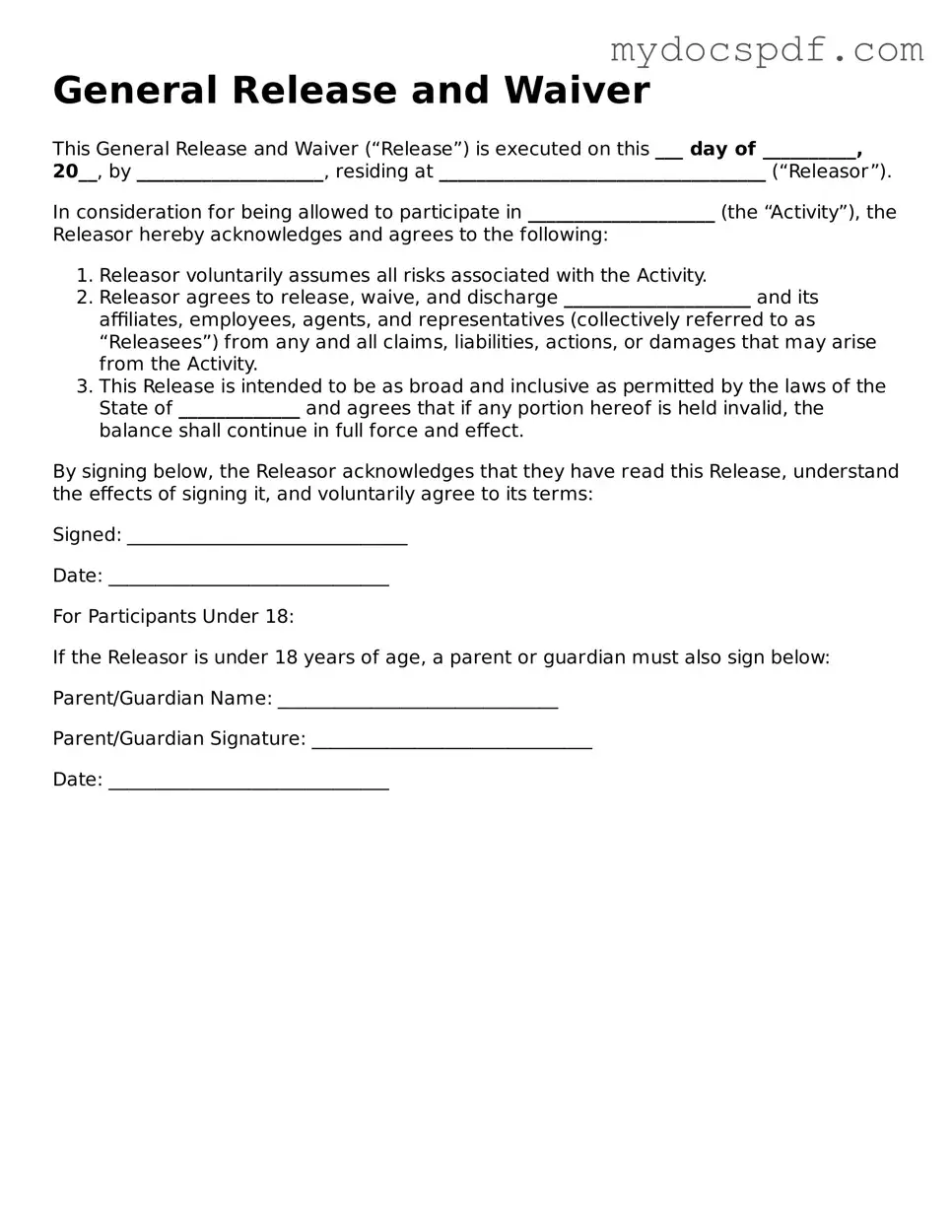General Release and Waiver
This General Release and Waiver (“Release”) is executed on this ___ day of __________, 20__, by ____________________, residing at ___________________________________ (“Releasor”).
In consideration for being allowed to participate in ____________________ (the “Activity”), the Releasor hereby acknowledges and agrees to the following:
- Releasor voluntarily assumes all risks associated with the Activity.
- Releasor agrees to release, waive, and discharge ____________________ and its affiliates, employees, agents, and representatives (collectively referred to as “Releasees”) from any and all claims, liabilities, actions, or damages that may arise from the Activity.
- This Release is intended to be as broad and inclusive as permitted by the laws of the State of _____________ and agrees that if any portion hereof is held invalid, the balance shall continue in full force and effect.
By signing below, the Releasor acknowledges that they have read this Release, understand the effects of signing it, and voluntarily agree to its terms:
Signed: ______________________________
Date: ______________________________
For Participants Under 18:
If the Releasor is under 18 years of age, a parent or guardian must also sign below:
Parent/Guardian Name: ______________________________
Parent/Guardian Signature: ______________________________
Date: ______________________________
